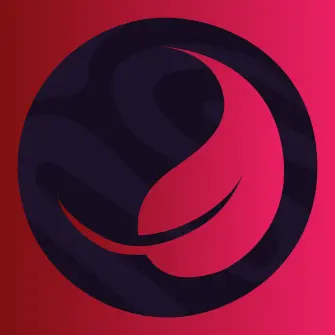“What if we put lanes on top of the other lanes?”
The other point to make here is, obviously you look at this highway trip and say “Well I am obviously not walking or biking it.” But, the expansive gaps between home and destination are often caused by many many roads and parking lots like this one. We have dedicated gigantic land masses specifically to cars, and it actually lengthens travel time to our destinations.
I have been to countries where, even if thin highways exist, they’re not the rule and it’s easy for other modes to get under or around them; and their roads don’t dominate the urban areas. There, the answer is simple: Just walk, you don’t even need a bike.
Elon:
Guys, I think I’ve got it… What if we built another lane but, you know, under the ground, like a tunnel.
He seemed to casually ignore that at the end of the tunnel was still the concept of an offramp with a 25mph street that everyone was funneling to.
Of course he never planned on building it anyway. It was all just to distract from California High Speed Rail, because that directly gets in his way of selling more cars.
because that directly gets in his way of selling more cars.
Which is stupid in itself, because the entire goal of the CA HSR project is to link long distance corridors, not putzing around town like most do with a Tesla.
In fact I think there’s a missed opportunity for EVs to partner with long distance public transit.
The main limitations of electric cars is distance, but if people knew they could go across the state or several states comfortably without their car, they might be more willing to take a electric car for city driving.
We have ferries. What if we could combine the efficiency of train and the convenience of ferries? People could just drive their own car on a train car of some kind and be shuttled to a destination and then drive off?
I’ve seen those trucks with a bunch of cars packed on top, something like that (minus truck) could totally fit in a train cargo container.

The loading and unloading is a pain.
Without looking deeper it’s probably cost prohibitive. Looking at long train rides cost a thousand dollars and takes 3-4 days, might as well just fly at that point.
that’s been done in europe since I think the 1930s
Just to be pedantic, the dumb car tunnels (or Loop), are the weird thing elon “invented” to “solve” traffic and reduce competition for his cars for urban transport. This eventually became one tunnel in LA to get between elon’s house and office, and the dumb taxi tunnel in Las Vegas.
The hyperloop, where elon “invented” the vacuum train, is a separate thing that exists to distract from CAHSR, and elon didn’t want to work on himself because “he’s too busy”, and not because it’s effectively just a scam and won’t work, and most of the companies that started up to develop it have since gone bust.
I recently watched a video about autonomous car and the dude argue the tech isn’t here yet, but it will work if we build a lane just for autonomous car and put every autonomous car on that lane.
Everyone in the comment basically calling him out for reinventing the train lol.
And put that in the basement
Trains are the crabs of transportation.
Can’t improve a crab.
Think of it like trickle down economics. If it hasn’t worked yet, you just need to make sure that the fat cats on top are fed so forcefully and so fast that something starts trickling down eventually.
Just keep going. We will tell you when to stop.
I mean we really don’t need cities, just make hundred lane roads in their place
No! Don’t stop now! We are so close!
I once heard of an experiment in economics that offers insight into this.
Say you have 100 people. You give each of them one of two choices:
A : you get $40 unconditionally B: you get $70 - n, where n is the number of people who choose B
You end up getting, on average across experiments, n = 30.
If you move the numbers around (i.e, the $40 and the $70), you keep getting, on average, a number of people choosing B so that B pays out the same as A.
I think the interpretation is that people can be categorized by the amount of risk they’re willing to take. If you make B less risky, you’ll get a new category of people. If you make it more risky, you’ll lose categories.
Applied to traffic, opening up a new lane brings in new categories of people who are willing to risk the traffic.
Or something. Sorry I don’t remember it better and am too lazy to look it up. Pretty pretty cool though.
I heard a city planner talk about why adding a new lane doesn’t help, and the term they use is “induced demand.”
Basically, people are going to take the route that they consider the most convenient, and that usually comes down to time and effort. Traffic hurts both by taking more time and being more stressful to deal with. When you add a new lane to a road, people think that the traffic will be easier there, so they take that route instead of their normal one. So you’re just adding more cars to the traffic that match or exceed the throughput of your new lane, basically putting you back at square one but a few billion dollars more poor.
You’ve essentially added a single lane one-way road to help ease traffic across the entire city.
When you add a new lane to a road, people think that the traffic will be easier there, so they take that route instead of their normal one
so for these people the new lane will create marginal improvement, right?
That’s the thing: Technically yes. It temporarily improves traffic. But only temporarily. IDK about you but spending billions of dollars to only temporarily improve traffic and then it ending up the same or even worse than before doesn’t sound like a good investment to me.
But only temporarily
but is it?
I thought the temporal improvement would be for everyone who already used the high way (because they will get to their destination a little bit faster). And for the few extra people, who start to use the highway but didn’t use it before, the improvment will stay.
That’s the thing, the number of new cars using that road ends up being at least one additional lane’s worth. So traffic moves at the same speed as it was before the extra lane, just now with one more lane’s worth of cars on that road.
If anything, you might see marginally better traffic on other roads because of the cars that started using the new lane, but you’d be talking about a handful of cars per road. Probably not enough for any discernible change in travel time or congestion, and each new lane you add later will have diminishing returns because it will be a smaller fraction of the total number of lanes coming from any specific direction.
If you make B less risky, you’ll get a new category of people. If you make it more risky, you’ll lose categories.
Can you explain what this part means? What do you mean by category here?
Yes. That wasn’t the best word choice; maybe “group” would have been better. I meant groups of people who are willing to take some level of risk. Imagine the categories are “low risk takers”, “medium risk takers”, and “high risk takers”.
Compared to A paying out $40, if you make B $50-n you’ll only get the high risk takers choosing B. If you make it $70-n you’ll get high and medium risk takers. If you make it $120-n you’ll get almost everybody.
If risk taking is a value between 0 and 1, the categories are groups of people inside certain intervals. For example, low could be [0, 1/3), medium could be [1/3, 2/3), and high could be [2/3, 1].
It’s called “Induced Demand”.
As a road widening project is completed, traffic is alleviated for a short amount of time. Then as time passes word spreads, or more people move to the city, or kids get older and get their driver’s licences. More and more people know this widened road is the fastest route, so more people take it, thus undoing the improvement. Then the cycle starts again - either with the same road being widened again, or another one a block over, on and on until the world is covered in asphalt.
The solution is to make alternative transit more appealing than cars. Bikes and public transit already have significant financial benefits, but lack infrastructure to make it more viable in North America. Busses get stuck in traffic, bikes are forced to share lane space with cars or sidewalks with pedestrians.
How is alternative transit the solution? Cities that have public transportation still have traffic jams.
There was an English traffic engineer that predicted that avg speed in central London will always be like 9mph. No matter how many lanes or public transit options you add. If there is no traffic, people will take cars until traffic jams are unbearable to give up. Then the system finds equilibrium.
The key is that both adding car lanes and adding alternatives like transit are subject to induced demand, but the consequences of it are different for transit than for cars. Not only is the limit of the added capacity much, much higher for a train than it is for a car lane, adding more traffic to the lane up to that limit makes the performance worse and worse (increasing congestion), while adding more transit ridership up to its limit makes the performance better and better (increasing train frequency and therefore reducing wait times).
Similarly, induced demand for walking and biking is a good thing because more people doing those things improves public health, doesn’t pollute like cars do, and takes up much less space.
So it’s not that induced demand is bad, it’s that inducing demand for cars, specifically is bad.
The key is public transit that doesn’t suck. For the last 100 years the car and oil/gas industries have spent billions of dollars undermining public transit.
Dedicated transit lanes, subways, light rail, protected bike lanes all make cars less appealing to those that want to use them.
Yeah, one of the best examples of this is the Vienna public transit network. About 1000 vehicles (bus, tram, light rail, subway) in service at rush hour, a daily total distance of over 200000km traveled, more year-long ticket owners than car owners in the city, and about 2 million “travels” per day, which is about 30% of all traveling done over the city (including pedestrian and bike traffic)
If that traffic would be routed only by car, the city would be a giant parking space; to compare, one subway train carries about 900 people in rush hour, which replaces 790 cars (avg 1,14 persons per car here). the subway interval in the rush hour is about 4 minutes. i live at one of the subway final destinations, which is on one of the far ends of the city - and i can be at the other side of town in about 25 minutes.
And constructing and running a public transit network is a pretty nice boost to the local economy, creates a whole lot of jobs. sounds like something a lot of us cities could make use of.
Mixed traffic works here, it allows mobility for all social classes (yearlong tickets cost 365€, so about 400$ incl. taxes), nearly all stations are barrier free.
There will always be traffic, but public transportation allows for a higher throughput for the same speed and total surface area of the roads.
Let’s be generous and assume that every car has 2 people in it (the truth is that the vast majority of cars, especially in the US, only have 1 person in them). Now imagine 15 cars vs. 30 bicycles. If we figure that you can comfortably fit 3 bikes in the same space as 1 car, you’re looking at 150% throughput for the bikes compared to the cars at the same speed. Give them their own dedicated, separate infrastructure, and they can probably go faster than traffic while also removing the danger of bikes and cars sharing the road. If you figure buses can fit 20 people in the space of 2 car lengths, you’re looking at 10x the throughput.
And that’s not even getting into transportation that doesn’t use the roads. The Boston T is a perfect example of this. Despite its notoriety for constant failures due to poor maintenance, and only being half the size it was 100 years ago, the T is considered to be the 3rd best public transportation network in the US. Why? Because the average commute time is about half the national average at roughly half an hour, and a full 50% of Boston’s commuters use the T every day. That’s half as many cars in traffic every day than if the T didn’t exist. Could you imagine if Boston, notorious for its bad roads and heavy traffic, suddenly had twice as many cars driving on its streets?
Public transit that share lines with cars are always going to be worst that cars, but if you add exclusive lanes for Public transit they go smooth as hell. This is why metros are usually the best option on cities with good metro infrastructure.
having lived in cities with amazing metro, ok metro, no metro and towns with shitty train access and great train access…
this is 150% true. Having an underground station near your house makes the entire city 30 min away, using buses or horribly interconnected trains makes things 1 to 2 hours away.
Even living outside the city, having a direct rail to the nearest metropolitan center take an hour increased quality of life for me by a fuckload.
The goal for alternative transit is not to remove traffic jam, it’s to transport people.
9mph is slower than a bike, it fits with my experience. When living in a city (in Europe, it might be different in the US) my feeling was always that bike was the fastest, public transport a bit slower but more comfortable (mainly protected from the elements and car drivers) and lastly car was the slowest and more stressful.
LA? 5? 405?
They just need to carbet bomb the fucking thing
In a place with essentially nothing but narrow two lane roads, no bike lanes or sidewalks, a little wider might serve some good. Adding a turn lane and a bike lane would free up tons of traffic.
If the highway increases in size, then more off ramps or more lanes in the off ramps are needed, which in turn need more lanes on the main street that connect to the off ramps. It’s basic filtration system dynamics.
“One More Lane Bro is the only option, I checked, and it should be subsidised by NYT who make too much money.” - Robert Moses
Work 👏 from 👏 home👏 !
The answer to so many manufactured problems.
Another solution is mass transit. That right of way could support light rail and still have several car lanes in each direction
The light rail also gives work from home people a way to get to shops and shows without driving
Light rail also can be built to not get stuck in traffic, which makes it faster than driving too
But what about the office landlords, are no one think about how they are going to feed their yatchs?
After the Covid lockdown, Italian politicians, pundits, and talking heads used sandwich sales as a reason for a return to office.
Turn them into long pig salami, for the good of the economy
Any city’s skylines players know what actually would fix this problem?
Viable alternatives to driving
I mean, that game does not actually properly stimulate transportation. The solution is:
- multi use zoning to reduce commute distances
- Make every mode of travel equally safe, convenient, and pleasant.
I believe another solution would be highways that are strictly for transporting of goods, rather than sharing roads with semitrucks.
Nah, very little of congestion is trucks. You can even see that in this picture. Plus, you’re not trying to make driving easier, that will just cause more people to drive (one more lane bro). You make everything else easier and people choose to walk/bike/bus and the roads clear up because there’s fewer people choosing to drive.
Delete the save and start again
One long meandering 6 lane road that makes up the entire city. I’m not even kidding, that’s pretty much the optimal solution in the game.
Caesar was like that, too. Citizens couldn’t pathfind if their life depended on it, and it sometimes did.
Buses and trains. That, or spaghetti interchange that are bigger than the rest of the city. Also, replace key arterial roads with a pedestrian path, call that path a park, and charge $20 for entry. That will easily fund all the city services and nobody will be too inconvenienced by having to pocket their car as they walk across the “park” to get between neighborhoods. Now excuse me, I have to go murder a little blue bird that won’t shut up about the garbage piling up
One more train* will fix it
Going from where to where?
Suburban centres to city centres, in places where that’s the traffic flow
The midnight train goes anywhere I hear.
I’ve seen that exact scene in Atlanta trying to get to Alpharetta from 75 S by 675.
Alpharetta represent! Lol
Um acttschually, we knew about induced demand as early as 1920, but the government just doesn’t care about science. (It used to be called traffic generation)
Part of it is that the organisations that design and build roads are also the ones who assess whether a road is needed. No big surprise that they “forget” about induced demand














